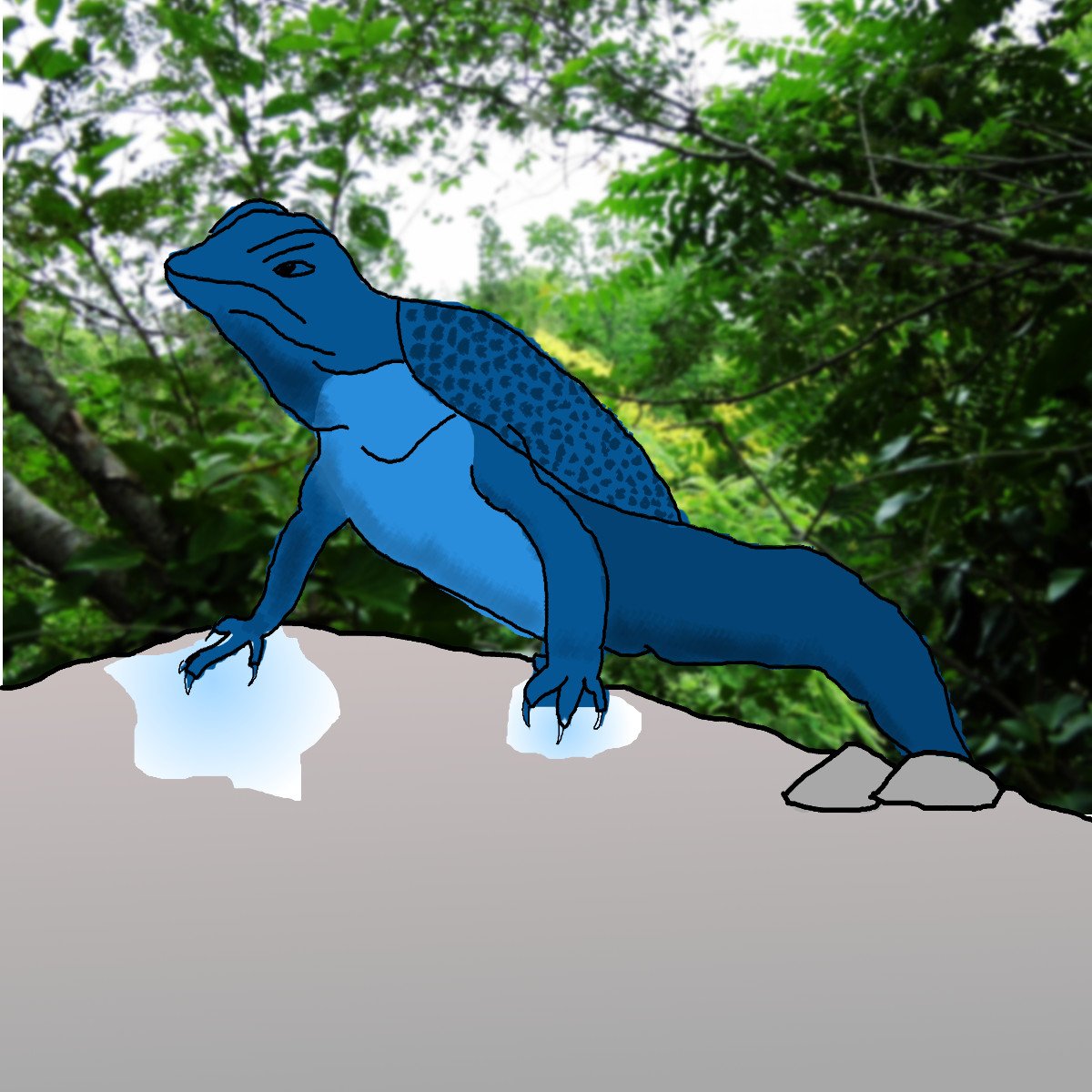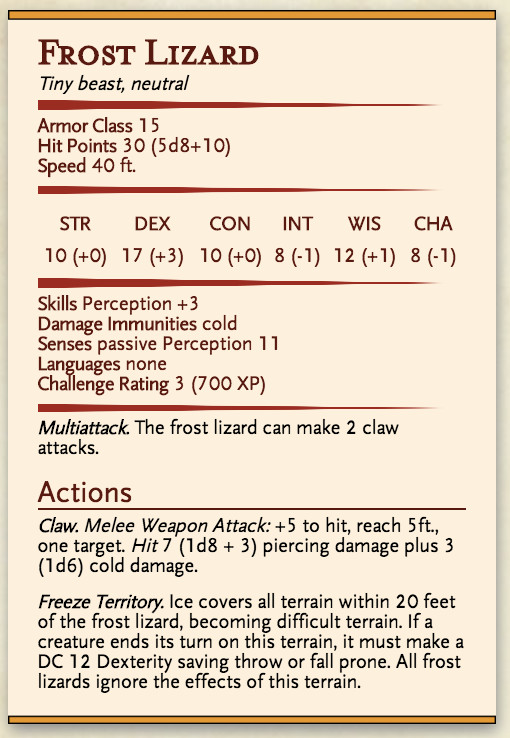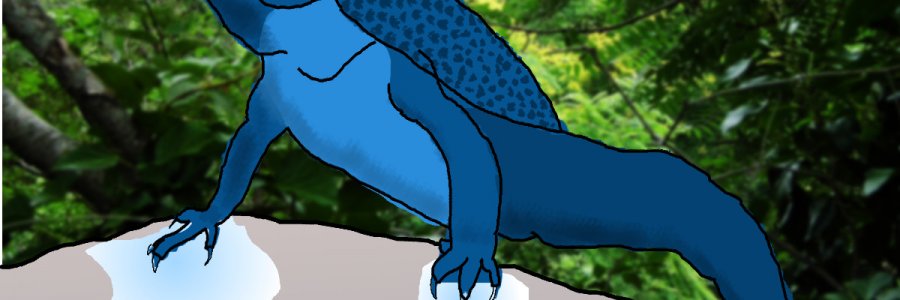As with the frost mites from a few weeks ago, frost lizards don't challenge the PCs so much for their raw combat ability than for their ability to freeze their environment.
Huge frost lizards survive their extremely cold habitats by magically storing cold in their body and releasing it on demand. They do this naturally over time as a way of regulating the temperature of their body and lair, but can also discharge cold from their feet to ward off predators or freeze prey.
When a frost lizard senses a dangerous presence, it typically discharges cold onto the floor around it (this may be an automatic fear response), making it very slippery. If the lizard attacks and connects with its claws, severe cold grips the victim, and a weak victim freezes on the spot.

In the wild, frost lizards typically lair in mated pairs in caves, where they protect 1d4+2 eggs or hatchlings.
Frost giants like to use frost lizards as guard animals in the same way that humans use dogs. In actively managed dungeons, a frost lizard serves as a very effective deterrent to adventurers, often claiming a large percentage of a dungeon level as its own.

Homebrewery stat block:
Frost Lizard
Tiny beast, neutral
- Armor Class 15
- Hit Points 30 (5d8+10)
- Speed 40 ft.
STR DEX CON INT WIS CHA 10 (+0) 17 (+3) 10 (+0) 8 (-1) 12 (+1) 8 (-1) - Skills Perception +3
- Damage Immunities cold
- Senses passive Perception 11
- Languages none
- Challenge Rating 3 (700 XP)
Multiattack. The frost lizard can make 2 claw attacks.
Actions
Claw. Melee Weapon Attack: +5 to hit, reach 5ft., one target. Hit 7 (1d8 + 3) piercing damage plus 3 (1d6) cold damage.
Freeze Territory. Ice covers all terrain within 20 feet of the frost lizard, becoming difficult terrain. If a creature ends its turn on this terrain, it must make a DC 12 Dexterity saving throw or fall prone. All frost lizards ignore the effects of this terrain.

![[Atom feed]](/user/themes/geek-archaeology/images/atom-feed.png)
![[RSS feed]](/user/themes/geek-archaeology/images/rss-feed.png)
![[iTunes podcast feed]](/user/themes/geek-archaeology/images/itunes-feed.png)